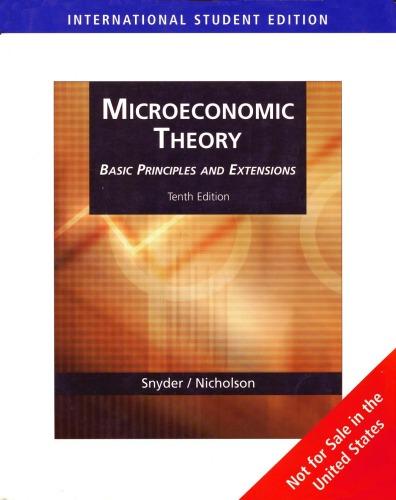7.9 HARA Utility The CARA and CRRA utility functions are both members of a more general class...
Question:
7.9 HARA Utility The CARA and CRRA utility functions are both members of a more general class of utility functions called harmonic absolute risk aversion (HARA) functions. The general form for this function is U(W)=(+W/y), where the various parameters obey the following restrictions: Y1, . + W/y0, [(1 y)/Y] > 0. The reasons for the first two restrictions are obvious; the third is required so that U' > 0.
a. Calculate r(W) for this function. Show that the reciprocal of this expression is linear in W. This is the origin of the term "harmonic" in the function's name.
b. Show that, when p = 0 and 0 =[(1-y)/y], this function reduces to the CRRA function given in Chapter 7 (see footnote 17).
c. Use your result from part
(a) to show that if y- then r(W) is a constant for this function.
d. Let the constant found in part
(c) be represented by A. Show that the implied form for the utility function in this case is the CARA function given in Equation 7.35.
e. Finally, show that a quadratic utility function can be generated from the HARA function simply by setting y=-1.
f. Despite the seeming generality of the HARA function, it still exhibits several limitations for the study of behavior in uncertain situations. Describe some of these shortcomings.
Step by Step Answer:

Microeconomic Theory Basic Principles And Extensions
ISBN: 9780324585377
10th Edition
Authors: Walter Nicholson, Christopher M. Snyder






